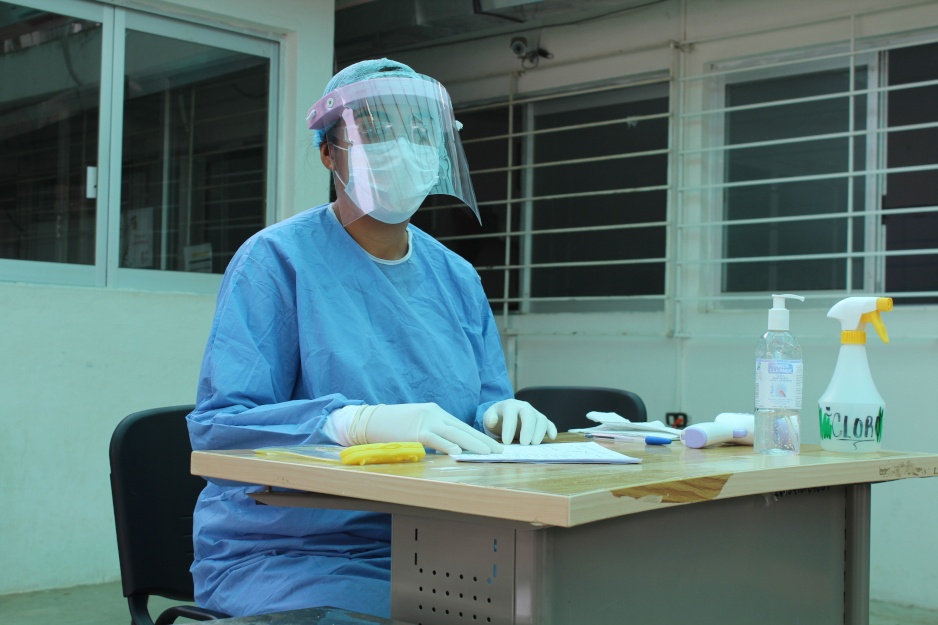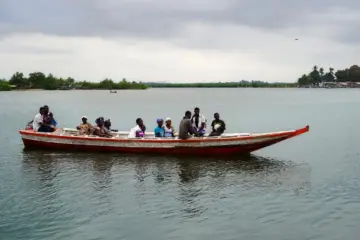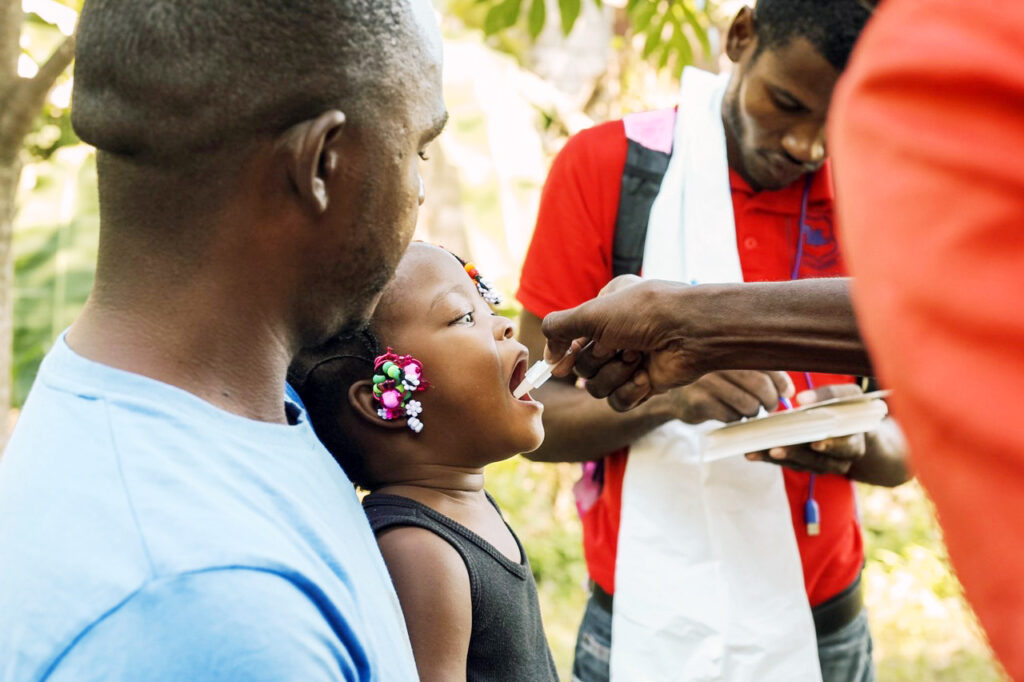Fighting a Growing COVID-19 Pandemic in Mexico

Posted on Jun 17, 2020

Patients walking into Jaltenango Hospital are now greeted by a nurse in a face shield and surgical mask, sitting at a desk, and flanked with bottles of disinfectant and hand sanitizer. She asks their name, where they’re from, and what symptoms they’re experiencing. Then she directs them to a waiting area—green, yellow, or red—based on whether their symptoms match with those of COVID-19.
Life has changed in this region of Chiapas, and triage is just one example.
Partners In Health, known locally as Compañeros En Salud, has worked in this southern Mexican state since 2011. The work focuses on strengthening local health systems, which includes supporting a hospital, 10 rural primary care clinics, and a maternal home.
As COVID-19 has spread throughout Mexico, that mission hasn’t changed. But it’s taken on a new urgency.
“Support is very important for places like Chiapas,” said Dr. Diana Sánchez, a newly minted physician in PIH’s pasante program. “It’s one of the most vulnerable places in Mexico.”
From PIH-supported Jaltenango Hospital to rural health clinics, COVID-19 is changing day-to-day health care in Chiapas. PIH is responding with compassionate care—the same ethos that has driven its work in the area for nearly a decade.
Education and Resources
The negative impact of COVID-19 across Mexico magnifies daily. The country’s death toll has been projected to almost quadruple over the next two months, with nearly 52,000 people estimated to lose their lives to COVID-19 by August 4. By early June, the Mexican Ministry of Health’s “stoplight” map, predicting risk of infection, had placed every state at the maximum “red light” level.
For Chiapas residents, the stakes become higher each day. While COVID-19 cases remained relatively low for several months, the number of confirmed cases began to rise at the end of May, as testing capacity improved. By early June, at least 49 people had tested positive in the areas surrounding the communities where PIH works.
PIH staff on the frontlines, such as Dr. Karla Saldivar, suspect there are many more cases to be found, so they’re coordinating a massive response.
Saldivar heads the Infection, Prevention & Control team, which is spearheading PIH’s COVID-19 response in Chiapas. For Saldivar, a gynecologist whose past experience includes emergency response with Médecins Sans Frontières, the COVID-19 response requires two critical components: education and resources.
Her five-person team educates the public about the importance of handwashing, COVID-19 symptoms, and where to go for help if they believe they’ve contracted the virus. They also develop and lead trainings for health care workers on how to use personal protective equipment (PPE) and help patients with symptoms of COVID-19, among other topics.
But education is only one part of the COVID-19 response; resources also are critical.
Hospitals and clinics must have triage areas, sufficient PPE, and care protocols in place. Saldivar works with local and national authorities to mobilize resources and send them to PIH sites. But that has been a sticking point.
Most of the PPE so far has come from private donations. Saldivar and her team have been scrambling to secure more PPE, so hospitals and clinics have the resources they need to fight the pandemic.
There also aren’t enough tests.

Testing, Treating, and Isolation
By early June, Jaltenango Hospital had just one confirmed case, but there are likely more out there, according to Dr. Erick González, the hospital’s interim director.
The hospital has only been able to test a handful of people for COVID-19, even though dozens have shown symptoms. That’s because there aren’t enough tests. In order to get one test, a hospital must have at least 10 suspicious cases.
Jaltenango Hospital has not seen enough such cases to acquire the tests it needs—in part because many patients are scared of setting foot in a hospital.
“There are probably more cases than the one we have confirmed,” González said. “People are scared of getting sick, of getting stigmatized.”
By contrast, Villaflores Hospital, a couple hours away by car, had 18 confirmed cases as of early June. Villaflores has seen more patients, detected more suspicious cases, and therefore acquired more tests from the government.
Despite Jaltenango’s low case count so far, González and staff know that an influx could happen virtually at any moment. They’ve worked hard to ensure that the hospital has protocols and procedures at the ready.
That includes a triage area, set up at the hospital’s entrance and staffed with nurses. The space is divided into three sections—a “green” area for patients with no respiratory symptoms, a “yellow” area for patients with one respiratory symptom, and a “red” area for patients with more than one respiratory symptom.
Nurses identify suspected cases based on COVID-19 symptoms and refer the patients to a health centre next to the hospital where they receive public health guidance, including quarantine instructions.
So far, the hospital’s one confirmed case was told to go home and isolate, since the patient’s symptoms were mild. For more serious cases, the hospital plans to provide in-patient care.
COVID-19’s Impact on Care
Rural Chiapas residents with COVID-19 symptoms are more likely to visit a health centre or local clinic first and not a hospital. Even as hospitals scramble for resources and draft response plans, these smaller facilities are also preparing for COVID-19—and are already feeling its effects.
The health centre where Sánchez works used to see dozens of patients each day. Now, it sees around five.
Sánchez, a first-year doctor completing her social service year with PIH, says that much of the Jaltenango Health Center’s usual programming has been put on pause. The centre has moved to limit appointments for patients with chronic illnesses, such as diabetes and hypertension, to once every two months. She estimates the centre now sees only 25 percent of the patients it used to.
Not all PIH programs in Chiapas have seen such drastic changes; some have simply been modified.
Casa Materna, the home for new and expectant mothers, continues the bulk of its operations, with nurses and midwives following public health guidance to prevent the spread of COVID-19 as they conduct prenatal appointments and assist with labour and delivery.
Similarly, community health workers still make house calls in the rural communities where PIH works, while taking additional safety measures, including wearing face masks.

COVID-19 and the Vulnerable
PIH’s vital work in Chiapas continues, both in spite and because of COVID-19. The need for strong health systems could not be more urgent, especially for Chiapas’ most rural communities.
“There are sometimes four to six people sleeping in one bedroom,” she said. “The idea of quarantine or social distancing is pretty much non-existent.”
Saldivar shares these concerns. While PIH-supported clinics are equipped with PPE and triage areas, people in Chiapas’ most remote areas—not supported by PIH—still don’t have access to a health facility equipped to handle COVID-19.
She also worries about patients who have comorbidities such as diabetes or hypertension, which put them at increased risk.
“We are really worried about vulnerable populations,” Saldivar said. “I’m afraid of the virus really getting into the community. A lot of our population are really vulnerable for other diseases. So this pandemic is really challenging for patients.”
In addition to the health concerns, a stream of misinformation surrounds COVID-19. Not everyone believes the pandemic is a real threat. Some think it’s a political conspiracy; others turn to religion as an explanation for the disease and, sometimes, as a reason not to fight it.
Health care workers must walk a fine line between listening to community members’ concerns while also educating them about the facts of COVID-19 and correcting misinformation.
Despite the challenges, PIH is fighting to mobilize resources and accompany patients each step of the way.
“It hasn’t been easy and we hope everyone gets quality health care,” said González. “Hopefully this will help us build better health systems and, as an organization, we will be able to know where we can improve.”
Article originally posted on pih.org



